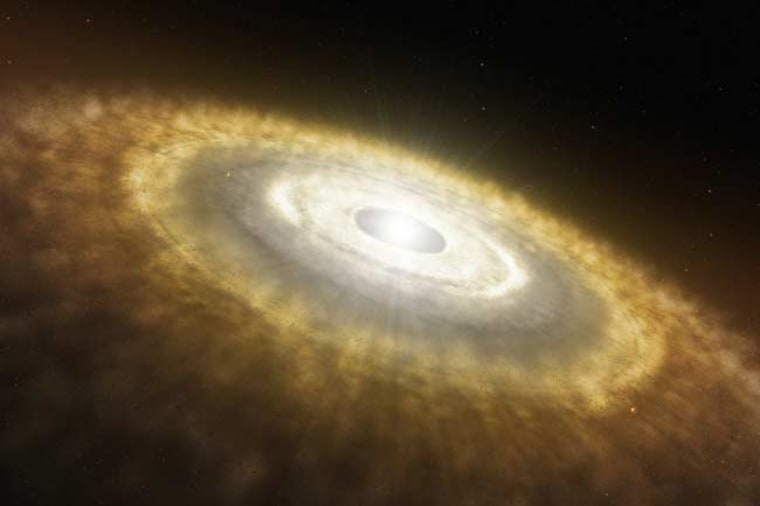The search for planets beyond our solar system may be a little easier, thanks to a new comparison of sun-like stars that has revealed a key difference in the chemistry of stars that have planets and their barren cousins and solved a long-standing mystery about our own sun's chemistry.
The solar mystery revolves around the abundance of the element lithium in the sun.
Unlike most elements lighter than iron, lithium is not readily produced in stars. Instead, it is thought that this element was mainly produced just after the Big Bang, 13.7 billion light-years ago. Most stars will thus have the same amount of lithium, unless this element has been destroyed inside the star.
Models of stellar evolution predict that stars of about the sun's mass and age should have a relatively high level of lithium because their atmospheres aren't hot enough or thick enough to burn off the element.
But astronomers see a range of lithium levels in sun-like stars, with some having a lithium abundance of about 10 percent of that estimated for the primordial universe, and others —such as the sun — having only 1 percent of the primordial abundance.
Because there seemed to be no way for sun-like stars to burn off this lithium, astronomers were left with a conundrum. That's where the European Southern Observatory's HARPS spectrograph survey of hundreds of stars came to the rescue.
But by looking at the sun-like stars in the HARPS survey, about one-fourth of the total sample, astronomer Garik Israelian, of Spain's Instituto de Astrofisica de Canarias in Tenerife, and his colleagues found that those that had an orbiting planetary system had lithium levels similar to the sun's, while those that were barren had higher levels.
"The explanation of this 60 year-long puzzle is for us rather simple," Israelian said. "The sun lacks lithium because it has planets."
Just why stars with planets lack lithium has yet to be explained, though astronomers have some theories involving the interactions between stars and their planets.
Israelian and his colleagues suggest that early in a star's life, the presence of planets or a proto-planetary disk might influence the star's rotation in a way that increases the mixing between the surface and the fiery interior of a star. The increased mixing could move lithium down to depths where it is hot enough to burn the element up.
But astronomers will have to work with models to see if this explanation holds up.
The low lithium signature of planet-hosting stars confirmed by Israelian and his team also suggest an easy and efficient way to look for more undiscovered planetary systems, they say.
In fact, Israelian and his colleagues think that "among dozens of planet host candidate stars, those with low lithium abundance will have (the) highest chance to host planets," Israelian told SPACE.com.
The team's findings are detailed in the Nov. 12 issue of the journal Nature.
